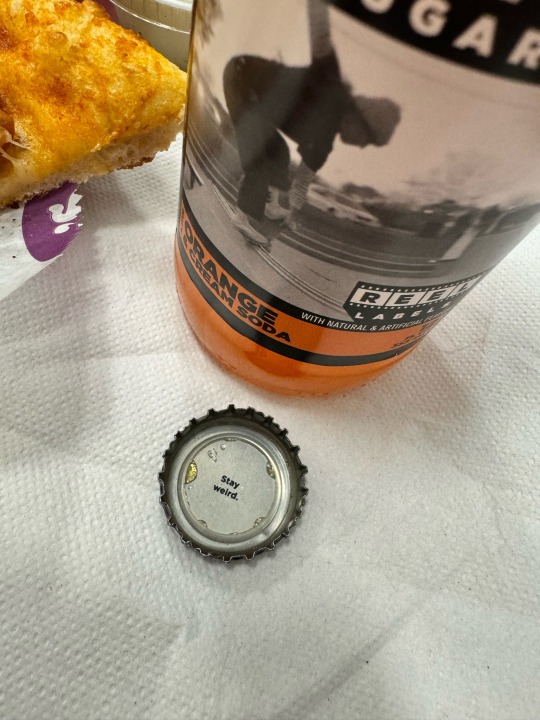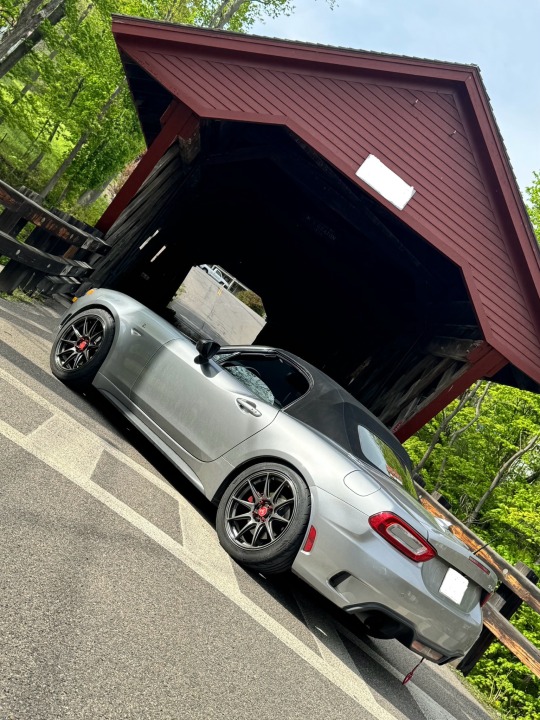#HPDE
Explore tagged Tumblr posts
Text
2 notes
·
View notes
Text
HPDE tips – The effect of weight transfer
When you're driving your car on a race track, weight transfer can occur in the longitudinal direction (from front to back or vice versa) and in the lateral direction (from side to side). To elaborate on this principle, let’s imagine a car with very soft suspension. The body of the vehicle leans in the opposite direction, which compresses the suspension on one side and decompresses it on the other. The way mass transfer occurs can either hinder or help on the road or track.
(1) Acceleration – weight transfer to the rear... When you accelerate, the mass of the vehicle shifts to the rear. This compresses the rear suspension and increases the available grip of the rear tires. Rear-wheel-drive vehicles are therefore at an advantage in this scenario. In a front-wheel-drive vehicle, front tire slippage is more likely, so you need to accelerate more gently. Oversteer is caused by a lack of grip on the rear wheels. The rear of the vehicle swings out and rotates excessively. When a front-wheel-drive vehicle experiences oversteer, slight acceleration and the rearward weight transfer can increase the grip on the rear wheels. It is possible to prevent or correct this oversteer situation. For a rear-wheel-drive vehicle in an oversteer situation, more acceleration is rarely the solution, as it may exceed the tires’ grip threshold. Another situation where an inexperienced driver might worsen oversteer is by instinctively lifting off the accelerator suddenly in a corner. This worsens oversteer by unloading the rear of the car, reducing rear tire grip and increasing the risk of losing control. We therefore recommend maintaining light and steady pressure on the accelerator throughout the turn. This keeps consistent load on the rear tires and maintains grip until the end of the corner. If you accelerate too aggressively in a turn, it results in a rearward weight transfer and a reduction in front tire grip. The front of the vehicle will be more inclined to continue straight ahead (understeer) despite your steering input.
(2) Deceleration – weight transfer to the front... If you enter a corner at high speed, turn the wheel, and notice the car tends to go straight, you're experiencing understeer. You can try to correct this by lifting off the accelerator, which will transfer weight to the front and increase grip on the front wheels. If that’s not enough, a slight brake application will transfer even more weight to the front and help reduce or eliminate the understeer. If you brake suddenly and hard, the rear wheels tend to lock up first. The rear brakes require less force because weight is shifting to the front. The rear becoming lighter is also why cars have smaller brake calipers at the rear. Despite this, the rear wheels are still more prone to locking up if you brake too aggressively. This is the main reason why heavy braking in a turn should be avoided — it can lead to wheel lockup, oversteer, and loss of control. To get the best lap times on track, you should complete most of your acceleration and braking in a straight line. A car coasting (neither accelerating nor braking) loses valuable seconds on the stopwatch and won’t be as fast. We advise our participants to transition smoothly from throttle to brake to reduce weight transfer and prevent the car from becoming unbalanced.
(3) Cornering – weight transfer to the opposite side... It’s also important to consider weight transfer during cornering. If you enter a turn gradually, the weight shift to the outer wheels will happen progressively. Since the outer tires do most of the work, the gradual increase in grip helps you take turns at higher speed. On the other hand, if you throw the car into a corner with a sudden steering input, the abrupt weight transfer will destabilize the vehicle and cause a loss of grip. Reminder – Smooth inputs are essential for speed and maintaining control of your vehicle. Don’t hesitate to ask an instructor for advice before pushing your limits on a track you’re discovering for the first time.
HPDE track days at Calabogie Motorsports Park for the 2025 season:
May 10 and 11
June 12 and 13
July 12 and 13
August 7 and 8
September 6 and 7
*** French below this line ***
Effet du transfert de masse.
Lorsque vous conduisez votre voiture, ce transfert peut se produire dans le sens longitudinal (de l'avant vers l'arrière ou vice-versa) et dans le sens latéral (d'un côté à l'autre). Pour expliquer ce principe, imaginons une voiture avec une suspension très molle. La carrosserie du véhicule pivote dans le sens inverse, ce qui comprime la suspension d'un côté et la détend de l'autre côté. La façon dont le transfert de masse se produit nuire ou aider sur la route ou la piste.
(1) Accélération - transfert de masse vers l'arrière ...
Lorsque vous accélérez, la masse du véhicule est projetée vers l'arrière. Cela provoque une compression de la suspension arrière et une augmentation de l'adhérence disponible des pneus arrières. Les véhicules à propulsion arrières sont donc avantagés dans ce scénario. Dans un véhicule à traction avant, le patinage des pneus avant est plus probable donc il faut donc accélérer plus doucement.
Le survirage est causé par un manque d'adhérence sur les roues arrières. L'arrière du véhicule décroche et pivote de façon exagérée. Lorsqu'un véhicule à traction avant fait face à une situation de survirage, une légère accélération et le transfert de masse vers l’arrière augmente l'adhérence disponible aux roues arrières. Il est possible de prévenir ou corriger cette situation de survirage.
Pour un véhicule à propulsion placé dans une situation de survirage, la solution est rarement réglée par une accélération supplémentaire car le seuil d'adhérence des pneus sera dépassé. Il existe une autre situation ou un participant inexpérimenté peut aggraver la situation de survirage ; son instinct de lever le pied de l'accélérateur soudainement lors d'un virage. Cette situation aggravera le cas de sur-virage car l'arrière du véhicule sera allégé. Il y aura alors une réduction d'adhérence des pneus arrières avec probabilité de perte de contrôle. Nous recommandons donc de maintenir une légère et constante pression de l'accélérateur pendant la totalité du virage. Cela permet de garder un appui constant sur les pneus arrières, de façon a maintenir l'adhérence constante jusqu'à la fin du virage.
Si vous accélérez trop brusquement dans un virage, cela se traduira par un transfert de masse vers l'arrière et une réduction d’adhérence des pneus avant. Le devant du véhicule sera plus enclin à continuer en ligne droite (sous-virage) en dépit de la position de votre volant.
(2) Décélération - transfert de masse vers l'avant ...
Si vous défilez à toute allure vers un virage, tournez le volant et constatez que le véhicule est enclin à continuer en ligne droite, vous êtes victime de sous-virage. Vous pouvez essayer de corriger la situation en soulevant le pied de l'accélérateur. Cela se traduira par un transfert de masse vers l'avant du véhicule, ce qui augmentera l'adhérence disponible sur les roues avant. Si cela n'est pas suffisant, un léger appui sur la pédale de frein va transférer encore plus de masse vers l'avant et vous aidez à réduire sinon éliminer votre situation de sous-virage.
Si vous appuyez soudainement et fortement sur la pédale de frein, les roues arrières auront tendance à se bloquer en premier. Il y a une moins grande force requise par vos freins arrières, car le transfert de masse se fait vers l'avant. L'allègement de l'arrière du véhicule est la raison pour laquelle les voitures ont de plus petits étriers de freins à cet endroit. Malgré ce fait, les roues arrières sont toujours les plus susceptibles au verrouillage lorsque vous utilisez les freins trop agressivement. Voilà la principale raison pour laquelle le freinage puissant dans un virage doit être évité. Cela peut entraîner un blocage des roues, un survirage et une perte de contrôle.
Pour obtenir les meilleurs chronos sur la piste, vous devez accomplir la majorité de votre accélération et de freinage en ligne droite. Un véhicule qui roule au point mort (aucune accélération ou freinage) perd de précieuses secondes au chrono et ne sera pas aussi rapide. Nous conseillons à nos participants une transition de l'accélérateur à la pédale de frein en douceur, pour réduire le transfert de masse et prévenir un déséquilibre de la voiture.
(3) Virage - transfert de masse vers le côté opposé ...
Il est aussi important de considérer les transferts de poids dans les virages. Si vous négociez un virage progressivement, le transfert de masse vers les roues extérieures se fera d'une manière progressive. Comme les pneus extérieures font la majorité du travail, l'augmentation progressive de l'adhérence vous aidera à prendre les virages à plus haute vitesse. À l'opposé, si vous projetez la voiture dans un virage avec une manœuvre brusque du volant, le transfert de masse soudain déstabilisera le véhicule et provoquer un décrochage de l'adhérence.
Un rappel - la douceur des manœuvres est de mise pour être rapide et garde le contrôle de votre véhicule.
Journée de Lapping à Calabogie Motorsports Park pour la saison 2025:
10 et 11 mai
12 et 13 juin
12 et 13 juillet
7 et 8 aout
6 et 7 septembre


0 notes
Text
High-Quality Extruders for Industrial Applications

Buy high-performance extrusion welders for industrial use. Durable and efficient, designed to meet the demands of various industries for optimal results.
Looking for a reliable industrial extruder? Hapco Inc has a wide range of plastic extruders for all your needs. With over 30-year history and factory-trained personnel in the industry, we have serviced and repaired HPDE welders from a variety of manufacturers including BAK extruders.
0 notes
Text
Hey can I get some innovative craft materials that aren't ... Almost completely fossil fuel derived plastics by weight
0 notes
Text
What Are HDPE Spigot Fittings?
HDPE Spigot Fittings are key components in HDPE piping systems, designed for strong, seamless connections. Unlike threaded fittings, they feature plain ends that are joined using butt fusion welding, creating a uniform and leak-proof bond.
Benefits: ✅ Durability: Resistant to corrosion, chemicals, and extreme weather. ✅ Flexibility: Ideal for applications with ground movement and temperature changes. ✅ Cost-Effective: Easy to install, reducing labor and long-term maintenance costs.
Perfect for water, gas, and industrial piping, HDPE Spigot Fittings are reliable and eco-friendly. 🌱
Have you used HDPE Spigot Fittings in your projects? Share your experiences below!
0 notes
Text




I had a fantastic weekend! Went to the first autoX event of the season! I had a blast! I miss racing. I’ll be going to the rest of these and a bunch of HPDE events this year! I’m trying to get back into driving like I used to before my transition. So wish me luck!
(Also the corvette isn’t mine. It’s another competitor. He was really nice to me so I wanted to use his car)
#autocross#autoX#road racing#racing#racing girl#driver#trans racer#trans#transgender#trans pride#transisbeautiful#mtf#transgirl#girlslikeus#mtf hrt#maletofemale#transformation#abarth#transexual#actually trans#mtf trans#this is what trans looks like#trans community#trans people#trans positivity#trans women#transwomen#trans woman#trans women are beautiful#trans experience
145 notes
·
View notes
Text
diy perks on youtube made a video on how to actually make artificial sunlight feel realistic. first of all, you need a light source with >90 CRI and ~5600K. but that alone isn’t enough to properly sell it. you also need the right shadows and light scattering.
to get the shadows to stay the same size no matter the distance, you need to reflect the light on a parabolic mirror. and to get the rayleigh scattering, you need to shine the light through something that does the tyndall effect. most commonly a translucent colloidal solution is used, but he said translucent hpde plastic and opalescent glass does it too.
so what he did was put the light source outside of a doorway, the reflected light shining into the chosen room. then, he made a window in a door that was actually a thin tank filled with soapy water. and the end result was sooooo good! it makes me want to recreate it but it’s way too hardcore of a project for me to do :(.
4 notes
·
View notes
Text
Toyota Supra Petrol On Road Price, Specifications,…
Beginning in 1978, the Toyota Motor Corporation launched the Toyota Supra, a sports car and grand tourer. The Latin prefix supra, which means "above," "to surpass," or "go beyond," is the source of the name "supra." The first four Supra models were built between 1978 and 2002. The 2024 Toyota GR Supra is the most recent version of the Supra. There are 4 different grades available, including:
• 2.0, which has an estimated MPG of 25/31 and a base MSRP of $45,540.
• 3.0, which has an estimated MPG of 23/31 and a basic MSRP of $54,500.
• 3.0 Premium, which has an estimated MPG of 23/31 and a basic MSRP of $57,650.
• The 45th Anniversary Edition, which has an estimated MPG of 23/31 and a base MSRP of $64,375.
two engines are available for the GR Supra:
A 3.0L twin-scroll single-turbo inline 6-cylinder engine with 382 HP/368 Lb.-Ft.
2.0L twin-scroll single-turbo inline 4-cylinder engine with 255 HP/295 Lb.-Ft.
It comes with a rear-wheel drive and a 6-Speed iMT or 8-Speed AT transmission option. Additionally, an AVS (Adaptive Variable Suspension) is an option.
The benefits of this membership include discounted entry to NASA-approved events as well as one complimentary High-Performance Driving Experience (HPDE) with a NASA expert.
ENGINES
The powerful engines of the Toyota Supra are well-known. Here are some specifics on the various models' engines:
• 2JZ Engine: From 1991 to 2007, the 2JZ engine was manufactured. One of the most well-known Toyota engines is a 3.0-liter inline 6-cylinder gasoline unit called the 2JZ-GTE twin-turbo engine that powers the fabled Toyota Supra1. Cast iron, a robust and long-lasting material, was used to create the cylinder block1. The 2JZ's naturally aspirated compression ratio is 10.5:1.• 2JZ-GTE Engine:
From 1991 to 2004, the twin-turbocharged 2JZ variant was made. The Toyota Aristo V (Japan) and Toyota Supra (JZA80) were the first vehicles to feature it. The engine's block, crankshaft, and connecting rods are all 2JZ-GE components1.
• 2023 Toyota GR Supra: 255 HP are the standard horsepower. The 2.0L twin-scroll single-turbo engine2 produces that amount of horsepower and 295 lb-ft of torque. The 3.0L twin-scroll turbocharged inline 6-cylinder engine has 368 lb-ft of torque and 382 HP, thanks to an improvement to the 3.0L model.
• 2024 Toyota GR Supra: This vehicle is powered by a 2.0 L/1223-cubic-inch intercooled turbocharged premium unleaded I-4 engine. It has a top speed of 1550 RPM and a top torque of 295 HP at 5000 RPM3.
Please note that there have been many other engines utilized in Toyota Supra variants over the years in addition to these.
to read full article click on this link:-https://carjano1.blogspot.com/2023/09/unleash-power-of-toyota-supra-ultimate.html
3 notes
·
View notes
Link
1 note
·
View note
Text
The physical properties of wood-plastic composite produced from red meranti (Shorea spp.) sawdust, polyethylene and polypropylene
Abstract This study aims to analyze the effect of polyethylene (HDPE) and polypropylene (PP) mixture composition on the physical properties of wood-plastic composites (WPC) with red meranti (Shorea spp.) sawdust as filler. The target of density of the wood products was 0.7 g/cm3. The ratio of sawdust and plastic was 40%:60% by adding 3% of MAH as coupling agent. The HPDE and PP ratio…
0 notes
Text
Jerry Can Manufacturers in Bharuch Best Practices for Storing and Transporting Materials
When you are transporting storing and transporting hazardous materials, you must ensure safety is your priority. For jerry can manufacturers in Bharuch, it is an important part and business critical process. In many cases, HPDE drums are used for the purpose of storage and transportation as they are chemical resistant and durable as well as lightweight. However, if you don’t handle these containers properly, you may note that the containers fail to work.
If you want to ensure that the drums follow the compliance and offer operational efficiency, you might want to incorporate the best practices for storing and transporting the materials. 1. The first thing to consider is that you are using the right drum for storing and transporting the hazardous material. For this, you need to ensure it has the right certifications. The UN/DOT certifications are important as these drums can handle dangerous content. It is equally important to check for chemical compatibility. Lastly, you must look at the capacity and wall thickness of the drum before proceeding. The drum should be compatible for the substance you plan to store inside like acids, bases or solvents. If you use the wrong drum, it can cause leaks and chemical reactions that jerry can manufacturers in Ankleshwar should avoid. You can consult the chemical compatibility chart and safety data sheet that helps you select the right drum. 2. The next step is to label and mark the drums clearly for better understanding. It is a good practice that is also important according to the regulatory bodies like OSHA, DOT and other international agencies like GHS. You should ensure the drums re clearly labeled with hazard class, UN number and handling symbols. You should also mark the drum’s with the manufacturer’s information. Next, add durable and weather resistant labels for the drums. You should lastly ensure colour coded options that makes it quick for you to identify the drums in the mixed storage environment. It is important to ensure your labels are visible from all sides and they don’t degrade from exposure to chemicals or UV.
3. The jerry can drums manufacturers in Bharuch believe that improper filling leads to spills and contamination. The best practices to avoid this includes avoiding overfilling. This would leave some space for expansion, which is important when the drum is exposed to temperature changes. You should use closed transfer system that can minimize the spills. It is equally important to seal the drum with compatible closures and gaskets immediately after filling. Lastly, you should avoid cross-contamination by cleaning the drum thoroughly before reusing it. You must use vented closures and pressure relief mechanisms to build pressure. 4. HPDE drums have their limits, which is why you should ensure proper storage conditions that maintain the integrity and safety of the drums. For this purpose, you should ensure temperature control. If you expose the drums to high heat for a prolonged period, it can soften the plastic. On the other hand, if you expose it to freezing temperatures, you might make the drums brittle. In case you store the drum outside, you will notice material breakdown. Lastly, you should ensure good airflow in the storage areas to prevent the fume buildup, according to the jerry can manufacturers in Bharuch.
0 notes
Text
Unraveling the Landscape of HDPE Geomembrane Sheets and Their Pricing in India
High-density polyethylene (HDPE) geomembranes have emerged as a critical material for many civil and environmental engineering projects in India and have a very broad range of application. These sheets of HDPE geomembrane have important material properties including, impermeability, extraordinary resistance to chemicals and extraordinary durability providing vital engineered barriers for containment, lining, and barrier systems. Engineered barriers, like HPDE geomembranes, protect precious drinking water resources, while allowing for responsible waste management, and sustainable development.
Read more - Unraveling the Landscape of HDPE Geomembrane Sheets and Their Pricing in India
0 notes
Text
In the year 1827 a scientist by the name of Jons Jakob Berzelius coined the word polymer which he derived from the Greek words polys meaning many, and meros meaning parts. Humans have taken advantage of polymers for centuries in the form of oils, tars, resins, and gums. It was not until the industrial revolution that the modern polymer industry started to develop. Plastics under appropriate conditions of temperature and pressure can be moulded or shaped. Unlike rubbery materials plastics have a greater stiffness and lack reversible elasticity. Some plastics such as nylon and cellulose acetate are included in another type of polymers, but are still plastics even though they have been turned into a fibre. The people of the US consume about sixty million pounds of plastics every year. The two main types are thermoplastics and termosets. Thermoplastics soften on heating and harden on cooling. Thermosets flow on heating and form rigid material and does not soften on future heating. Thermoplastics are what are used mostly. Everyday plastics such as polyethylene and poly (vinyl chloride) have replaced traditional materials like paper and copper for a wide variety of applications. Polyethylene is used in a wide variety of applications because it can be produced in many different forms. The first of which is low-density polyethylene or branched polyethylene. This polymer has a large degree of branching; forcing the molecules to be packed rather loosely forming a low-density material. It is soft and pliable and has application ranging from plastic bags, containers, textiles, and electrical insulation, to coatings for packing materials. The opposite form of LDPE is HPDE or high-density polyethylene. The molecules in HPDE are tightly packed and are used in plastic tubing, bottles, and bottle caps. (Semlyen, 2000, 361-66) The two major classes of polymers are rubbery materials and plastics. The rubbery materials have a loose cross-linked structure. This causes rubber to possess memory. On average about 1 in 100 molecules are cross-linked. When the number reaches 1 in 30 the material becomes rigid and brittle. Natural rubber's repeating unit is isoprene. This material is found in the bark of the rubber tree and has been used by humans for centuries. Most of the rubber used today is a synthetic variety called styrene-butadiene rubber. (Doi, 1993, 119-24) Natural rubber played an important role in the creation of synthetic rubber because of isoprene's presence. Researchers eventually found success using butadiene and styrene with sodium metal as the initiator. This rubber was called Buna-S. Hundreds of Thousands of tons of synthetic rubber were produced in government controlled factories during World War 2. Read the full article
0 notes
Text
How I Turned Grandma's Buick Into An Everyday Track Hero
My interest in the automotive world began when I was born, in Sonora, Mexico in the 1990s. My name is Jesus David Serrano, but you might know me by my moniker: BigBootyRacing. I use the name when I participate in your casual weekend HPDE time attacks in my naturally aspirated 2003 Buick Regal LS. I assume my interest in cars is something baked into my DNA because my mother says I started…
0 notes
Text
0 notes
Text
0 notes